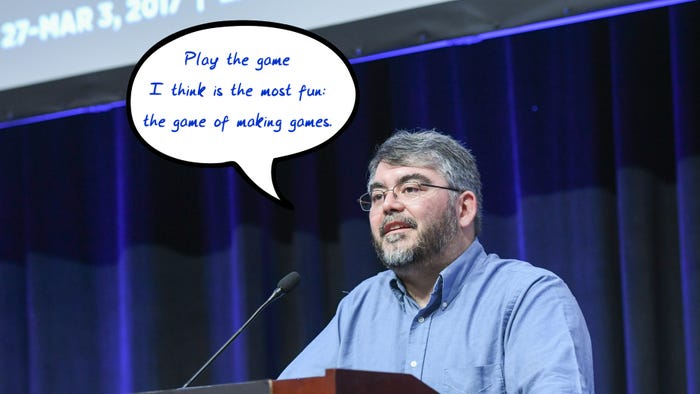
Featured Blog | This community-written post highlights the best of what the game industry has to offer. Read more like it on the Game Developer Blogs.
Quit the Grind: New Ways to "Level"
Any RPG fan knows the feeling when battle stops being fun and starts being work, when you're just grinding because you feel you have to.
But it isn't necessary- just look at what some of the classic RPGs have done to keep "leveling up" fun!

This is a repost from gamemakeworld.wordpress.com.
In many RPGs you reach a point when battles are neither novel nor challenging, when you’re just going through the motions for gold or experienceーalso known as grinding. It can kill any momentum the game had going, and it turns play into work.
The problem is that grinding is hard to avoid in the standard RPG formula where each battle pushes you closer to the big “level up.” You’re inherently rewarded for grinding, and sometimes forced to by sudden jumps in difficulty.
But many classic RPGs have explored alternativesーlet’s see how they handled “leveling up.”
LIMITED NUMBER OF ENEMIES
This is the most simple solution- you can’t grind if there aren’t any more enemies!
This is used by many Strategy RPGs (Fire Emblem, Front Mission, etc.) that they are divided into stages with a set numbers of enemies. This of course requires careful planning by developers to make sure the player doesn’t get stuck somewhere at a low level. Many offset this danger by making experience gains relativeーkilling a lower level enemy might get you only one experience point, while a powerful enemy sends your EXP skyrocketing. This keeps characters around an average level throughout the game.

Battle in Front Mission for SNES. Great character portraits by Yoshitaka Amano and gritty atmosphere.
This way the player can keeps pushing forward without the distraction of grinding, which has always been one of my favorite things about SRPGs compared to RPGs. You never “forget where you were,” so the story is easier to follow and enjoy.
ALLOW THE PLAYER TO DIE
Sometimes you have to grind just to survive sudden jumps in difficulty, which goes against what I think RPGs are all about: exploration and discovery. Let’s say you reach an exciting new cavern to explore, but instead of going in you have to first grind through some easy battles in the woods for 30 minutes with the same old monsters you’ve seen before. Not very bold or adventurous.
So it’s nice that there’s no such thing as Game Over in SNES games like Metal Max 2, Gokinjo Boukentai, and Romancing SaGa 2. If you die, you simply start back in town and can try again. This enables you to actually explore new areas, even if you’re not sure you can survive.
In little-known-but-super-cool Metal Max 2, a mad scientist finds your corpse, drags it back to town and brings you back from the dead without penalty, which somehow suits the wild and crazy, post-apocalyptic world of the game.

Metal Max 2: the SNES RPG version of Borderlands (an English version was also recently released… ;) )
In Gokinjo Boukentai (“Neighborhood Adventure Troop,” another virtually unknown gem), each time your party dies you actually get a stat boost, making the dungeon easier next go round. Although this basically rewards the player for dying, the game is pretty easy to start with so its not worth dying just for a minimal stat boost.

Gokinjo Boukentai’s graphics are hyper-cute and sometimes disturbing, somehow reminiscent of Earthbound.
Romancing SaGa 2 is set up so that you play as multiple generations of emperors. If your party ever dies, you simply choose a successor and start again from the throne room. You actually benefit from playing as a variety of emperors, so it’s worth it to accept your death and move on. There are some super tough boss battles that I don’t think you’re expected to win at first, and its fun to encounter them later in a new generation. An Emperor dies in an epic battle with one of the Seven Heroes, but his successor comes back decades years later to avenge his death… It makes for an epic tale!

A new Empress is born in Romancing Saga 2.
STORY-BASED GROWTH
The only game I know to do this is Chrono Cross (someday I’ll write a post that doesn’t bring up CC, I promise). Stat growth comes (almost) only from beating bosses and mini-bosses in the main story-line.
This keeps the story moving since there’s not much to be gained from fighting random battles. In fact, after getting the few small gains possible between bosses, I usually avoided enemies altogether and ran from any fights I accidentally engaged. Thankfully, CC is one of the few games where running away actually works 100% of the time. (“Running Away” deserves a whole post of its own, come to think of it…) Fleeing is also nice since CC’s battle song will drive you literally insane and make you want to imprison the composer.

Chrono Cross characters get semi-random bonuses at each new star (ie after each boss battle).
I could go on, but let’s just say Chrono Cross’ star system is original, interesting, frustrating and confusingーlike the game itself.
ENEMIES MATCH PLAYER LEVEL
The only games I know of to do this are the Romancing SaGa series (sorry for also bringing RS up constantly, but hey, it and CC are super innovative, I can’t help it!). Enemies are divided into basic categories like undead, beast, and fish, which you can see from their sprite in a dungeon, but the enemies that appear in battle vary depending on how strong you are.
This makes true open-ended world exploration possible. The exact order of quests doesn’t matter because enemies will always be at a challenging level. Even some bosses changeーthe Seven Heroes of RS2 have drastically different “forms” depending on which “generation” you face them in (…which is awesome).
I find this a lot more fun than games like Skyrim and Borderlands (though I love Borderlands), where quests become laughably easy if you don’t tackle them early enough, or you stumble into an area that is way over your head.
The Romancing SaGa series further limits grinding by making stat gains random and incremental. You can’t just “reach the next level” and get big boosts. Instead, you get a little HP here and another skill level with axes there, gradually becoming stronger. These incremental gains are also more likely to happen when facing bosses or otherwise dire situations, so easy-peasy random battles won’t help you much.

Someone’s been using her axe in battle!
OTHER WAYS
It’s hard to think of approaches to “leveling” that don’t boil down to grinding for some kind of currency, whether it is experience, gold or items. But combinations and tweaks of the above approaches could lead to some fun new experiences.
For example, in the games that let the player die, death is still a bit of a setback since you lose your physical progress. But what if you could continue on afterwards? If you were not expected to win every single battle (as you are in most RPGs), the difficulty and strategy of each fight could be considerably higher. Losing might simply bring in less experience or bonuses, but not halt your journey through the dungeon.
Another possibility is for equipment to have a much greater impact on abilities than character level. If equipment were also super rare, than finding a new equipment would be a major event and potential game changer. This would focus the player on the joy of discovery as they push the story along in search of better equipment.
If you think about it, taken to the extreme, no grinding means no gains from random battles, which means random battles become pointless to a degree, which means that the solution might require doing away with random battles altogether.
On that note, what if the limited number of enemies approach of SRPGs was used in a traditional open-world RPG. What if you could actually eliminate those monsters bothering the villagers one by one, and they stay gone. You would probably feel like you actually had an impact on the world and that each battle was actually meaningful… What a wild idea!
I think this is an opportunity to be creative and liberate players from the ongoing horrors of grinding. How do YOU see it happening?
Read more about:
Featured BlogsAbout the Author(s)
You May Also Like








